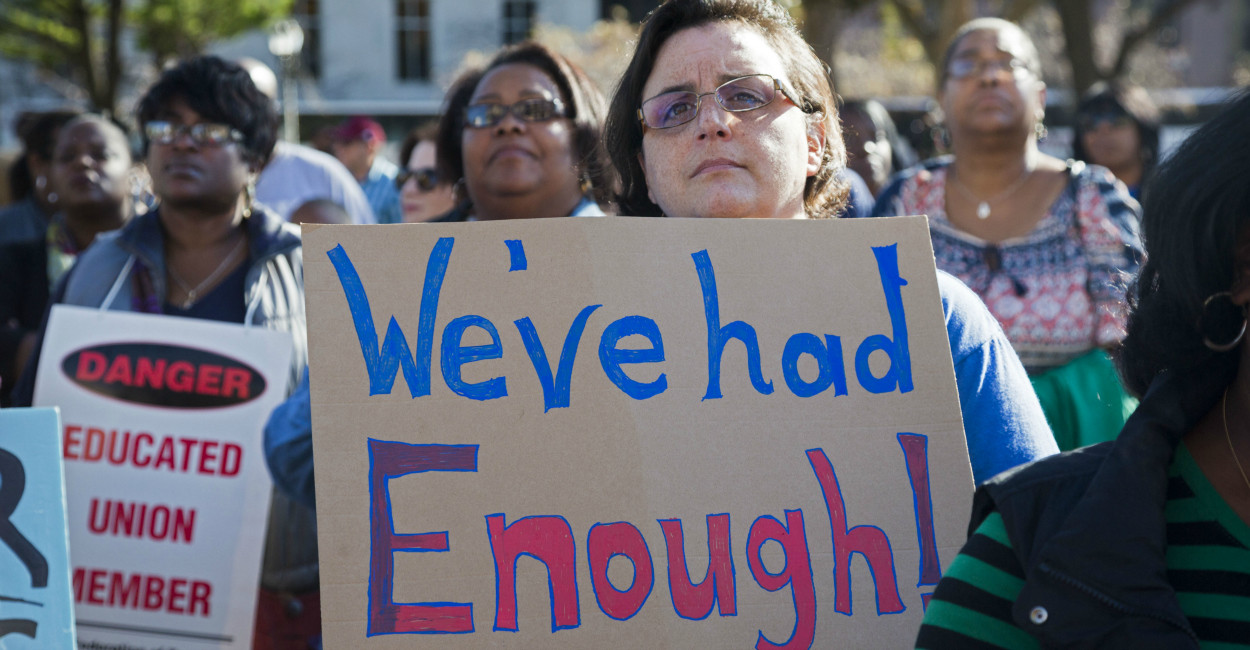Detroit Public School Teacher
‘Sick Out‘ Underway While
Just 8% of Students Can
Read Proficiently

Detroit teachers and other district employees protested in 2015. (Photo: Jim West/ZUMA Press/Newscom)
Nearly all schools in Detroit were closed Wednesday
due to a massive teacher “sick out,” preventing
students from attending class.
Teachers have complained about over-crowded classrooms, poor school conditions, and
dissatisfaction with the idea of charter school
growth in Michigan.
The teachers’ sick-out includes a planned
march, which will conclude near a venue
being visited by President Barack Obama
Wednesday. Meanwhile, 46,000 kids are
unable to attend school in Detroit.
Among those 46,000, it’s likely that less
than 4,000 of them can read proficiently.
According to the U.S. Department of Education,
Eight percent.
And just seven in 10 students graduate.
But lack of progress is due not to a lack of
resources in Detroit public schools, which
According to the Mackinac Center and a
separate analysis by Randan Steinhauser:
– About 75 percent of the annual District
budget goes toward paying employees
covered by its current collective bargaining
agreement for teachers.
– Out of a new $7,450-per-pupil grant the
Detroit school district will receive this year,
$4,400 will be spent on debt servicing and
benefits for teachers who have retired.
– The average Detroit Public Schools (DPS) superintendentmakes between $121,091 and
$178,871 a year.
– The superintendent can select up to two
“professional associations” (unions) to be a
“professional associations” (unions) to be a
member of each year, and the district
(taxpayers) will reimburse his membership dues.
– DPS has a debt of over $3.5 billion, which
includes unfunded pension liabilities.
Funneling money into a mismanaged school
system has not created an environment
conducive to improving academic achievement
in Detroit.
Serious reforms to the district are necessary.
Policymakers in Michigan would do well to
enable every Detroit child—and every child
in the state—to exercise school choice through
the use of education savings accounts (ESAs),
accounts that enable families to harness the
funds that would have been spent on their
children in their assigned pubic school to craft a customized education plan. They can begin by
considering how to tackle the barriers to school
No comments:
Post a Comment
Thanks for commenting. Your comments are needed for helping to improve the discussion.